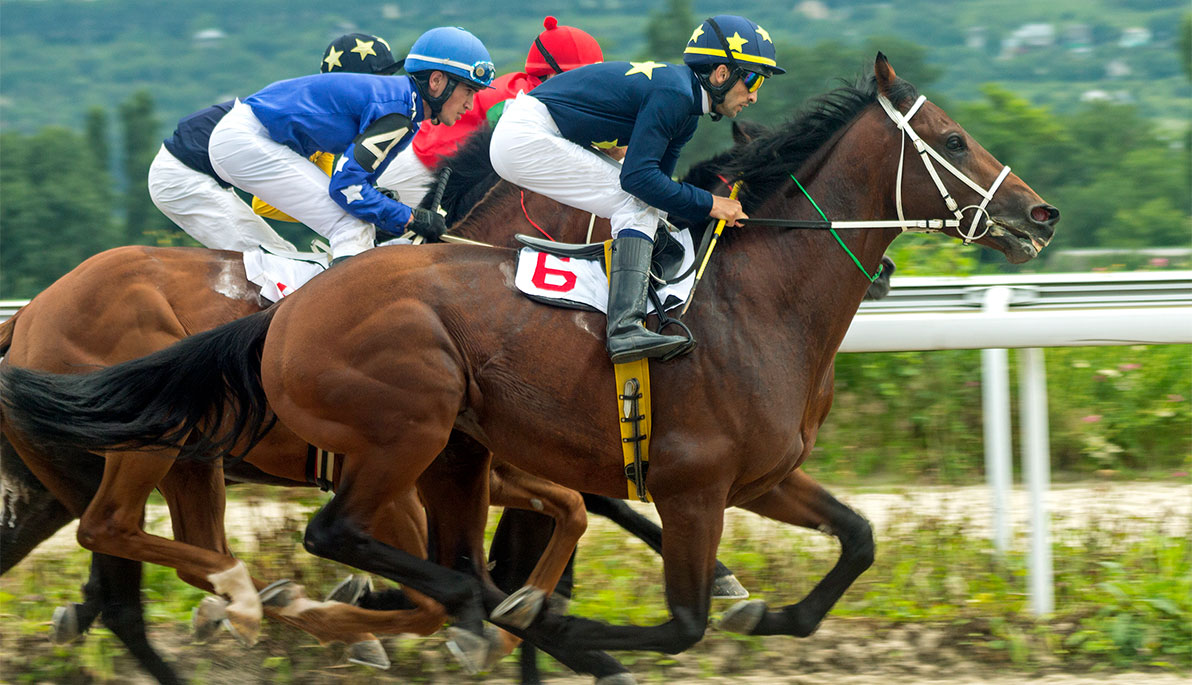
NYIT Experts Go Head to Head with Jockey Concussions
June 13, 2018
Picture racing through a herd of horses at 40 miles per hour, clinging to the back of a 1,000-pound thoroughbred, with only a two-pound helmet to protect you from a concussion. While this danger comes with the territory of being a professional jockey, NYIT concussion experts say more must be done to protect these athletes from head injuries.
“Jockeys have to beat the odds to win the Triple Crown, but unfortunately concussions are commonplace,” said Hallie Zwibel, D.O., director of NYIT Center for Sports Medicine.
One of the few existing studies on the subject has shown that more than 25 percent of horse racing injuries result in trauma to the head and neck. Yet, riders may not be aware that their fall led to a concussion, since symptoms such as memory loss, headaches, confusion, and dizziness are short-lived.
This lack of awareness led the Center for Sports Medicine to team up with The Jockeys’ Guild, an advocacy organization that assists permanently disabled jockeys. Unlike other professional sports, such as the NFL, U.S. horse racing lacks national concussion protocols. The organizations plan to fill this gap by developing “return to ride” rules that will provide instruction on when injured jockeys can safely return to racing.
However, a protocol is only one half of the equation—prevention and protective gear is also key. Ahead of the Belmont Stakes on June 9, Milan Toma, Ph.D., assistant professor of mechanical engineering at NYIT School of Engineering and Computing Sciences, was awarded $15,000 from the New York Thoroughbred Horseman’s Association (NYTHA) to help fund a study on jockey helmet safety and concussion.
The forthcoming study, “The Computational Assessment of Helmets and Concussion,” will collect data on jockey head protection through simulation testing of various helmet designs. This data will be shared with other researchers studying head trauma in professional sports, with the goal of determining the best head protection under various racing conditions.
“While much of the discussion regarding helmet safety has been focused on other sports, such as football, I am happy to lend my expertise to help deliver much needed awareness to horseracing,” said Toma, who plans to continue raising funds for the future study.
Both experts cite former pro-jockey Ramón Dominguez as a source of inspiration for their work. Dominguez, who has appeared as a panelist on the annual Head Injury Awareness Sports Forum and has advocated for Toma’s work, was forced to retire in 2013 after being thrown from his horse at Aqueduct Racetrack when his steed scraped heels with another horse. After falling, Dominguez was injured further when he was kicked by a trailing horse. The injuries resulted in three weeks of hospitalization and rehabilitation.
“As an athlete who experienced firsthand a career ending traumatic brain injury, I understand the importance of brain/skull protection,” said Dominguez. “I’m excited to have the support of the NYIT team while working on helmet safety for my fellow riders and simultaneously raising awareness about this important topic throughout our sport.”
More Features

An Alumnus’ Commitment to the Environment
As an energy management graduate from New York Tech’s Vancouver campus, Jasdeep Gulati (M.S. ’22) is highly invested in educating people about environmental and climate sustainability.

Vancouver Faculty Win University-Sponsored Research Awards in New Program
The new Global Impact Research Grant (GIRG) program has been developed to keep Vancouver-based faculty connected to faculty and research projects being conducted on the university’s New York campuses.

Studying Climate Change One Degree at a Time
Junhua Qu (M.S. ’24) began her collegiate journey in Beijing. But, her interest in climate change took her to New York Tech’s Vancouver campus to study energy management.
